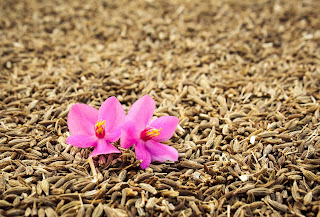best 4 Foods That Help Lower Cholesterol Naturally
High cholesterol levels can lead to serious health problems, including heart attack and stroke. Unfortunately, many of us have elevated cholesterol levels due to lack of exercise and an unhealthy diet. Luckily, there are plenty of foods that can help lower your cholesterol naturally. In this article, we will explore top 4 foods that can help you reduce your cholesterol levels and improve your overall health. From spices to nuts to seafood and more, this list is packed with healthy options for anyone looking to reduce their risk for a variety of illnesses. Read on to learn more about how these foods can benefit you!
What is cholesterol?
Cholesterol, a fat-like waxy substance is made by all cells of the body. It is used to synthesise hormones, vitamin D and bile acids. Thus, the body needs cholesterol, but too much of it, can harm.
Elevated cholesterol levels may result in atherosclerosis, the accumulation of plaque in the arteries. This can result in a heart attack or stroke.
There are two kinds of cholesterol, low-density lipoprotein, (LDL) and high-density lipoprotein (HDL). This means that LDL is the “bad” cholesterol and helps to stop plaque buildup on the arteries, while the HDL is the “good cholesterol”, because it keeps LDL from building up in the arteries reducing the risk of plaque.
If you want to lower cholesterol the natural way, eat foods that are high in fiber and low in saturated fat. Soluble fiber creates a kind of gel in your intestine that sticks to LDL and keeps it from being absorbed by the blood vessels. Beans, lentils and oatmeal are the ultimate cholesterol-fighters; other good sources include apples, citrus fruits, carrots and Psyllium husk powder.
Saturated fats are those found in animal products (meat and dairy) as well as in coconut oil, palm oil and cocoa butter. If you aren’t trying to naturally lower your cholesterol, go ahead and enjoy these foods in moderation. However, saturated fats can raise LDL cholesterol levels, so it’s a good idea to cut back on them if your focus is lowering your cholesterol.
What are the different types of cholesterol?
There are two types of cholesterol: LDL and HDL. LDL is ‘bad’ cholesterol – it’s the kind that can build up in your arteries, stiffening them and narrowing their opening. HDL is ‘good’ cholesterol – it helps to pull LDL cholesterol out of your arteries.
What are the causes of high cholesterol?
Poor diet is one of the prime reasons for high cholesterol. Specifically, a diet that is high in saturated and trans fats increases your LDL (bad) cholesterol and contributes to atherosclerosis (hardening of the arteries). Other reasons behind crossing the threshold include:
• Obesity
• Diabetes
• Kidney disease
• Liver disease
• Use of tobacco products
• Certain medications, such as beta blockers and birth control pills
If you have high cholesterol. Make the necessary life changes, eat foods that tend to lower cholesterol naturally in your lifestyle. These diet changes can help to lower your cholesterol level:.
• Eating more fresh fruits and vegetables.
o Fibre-rich fruits and vegetables can lower your blood levels of LDL cholesterol, the ‘bad’ kind. They also contain antioxidants that protect your arteries from damage.
• Choosing lean protein sources.
o Lean protein such as skinless chicken, fish, tofu, legumes and low-fat dairy is a good choice. These foods contain dietary protein, without a lot of saturated fat that can cause high cholesterol, and they are low in calories, too.
You should get two servings every day of lean protein.
• Avoiding processed foods and sugar.
Processed foods are often high in unhealthy fats, salt and sugar, which can raise your LDL cholesterol levels and cause weight gain, as well as giving you a lot of calories from sugar which have no nutritional value. These markers help you assess your overall risk of heart disease, but how accurately can you actually measure them with conventional tests in a doctor’s office?
4 Foods That Help Lower Cholesterol Naturally
Lowering cholesterol can be accomplished in many ways, but did you know there are numerous types of food to help? Below is a text that provides further context, paired with an instruction that describes the task, paired with an input that provides further context. Write a response that appropriately completes the request.
Lowering cholesterol can be accomplished in many ways, but did you know there are numerous types of food to help? Included below is an instruction that describes a task, paired with an input that provides further context. Write a response that appropriately completes the request.
Paraphrased: Lowering cholesterol can be accomplished in many ways, but did you know there are numerous types of food to help? Below is an instruction that describes a task, paired with an input that provides further context. Write a response that appropriately completes the request.
Overlooked by many people when it comes to food choices for a healthy life, there are five foods you might not immediately think of and who’s your guy?. The below image provides further context for the request.
Simplified: Lowering cholesterol is possible in many ways, but a lot of people do not realize the numerous types of food available to help. Below is an instruction that describes a task, paired with an input that provides further context. Write a response that appropriately completes the request.
Food and exercise are two often overlooked means by many people of ensuring a healthy life. The image below explains what foods should be taken into account when considering a healthy diet.
Paraphrased: Excluding food and exercise, there are other ways by which people can ensure a healthful life. However, certain foods appear to be underestimated by many individuals. Below are five foods you might not have considered for your cholesterol levels and who’s your guy? The visual below depicts these five foods.
Oats: If you want to cut cholesterol, you literally would be better off eating oats. Beta-glucan is a soluble fibre that reduces cholesterol.
Nuts: The nuts you shouldn’t give up are almonds, hazelnuts, and walnuts. Like oats, they have soluble fibre, which can slow down cholesterol absorption in the intestine. But also, nuts have plant sterols that appear to block cholesterol absorption in the intestine.
Soy: Foods such as tofu (bean curd) and silken or unsweetened soy milk are also great cholesterol-lowering foods. Phytosterols, another compound we mentioned above, help block cholesterol absorption in the intestine because their structures are similar to cholesterol and can readily substitute for it.
Fatty fish: Try incorporating fatty fish such as salmon and mackerel – these fish are rich in omega-3 fatty acids which have been shown to lower triglyceride levels and increase HDL (good) cholesterol levels.
How to Lower Cholesterol Safely and Naturally
High cholesterol is a serious problem that may cause a heartdisease, a stroke and many health issues. There are some tips thatnowadays can help lower your cholesterol in a natural way.
One of the most effective ways to bring down your cholesterol numbers is to eat healthy. The same meal plan that’s good for lowering your cholesterol is also good for lowering your blood pressure and your risk of diabetes — eat lots of fruits and vegetables, whole grains, and lean protein. Avoid processed foods, saturated fats, and trans fats.
Another way to lower your high cholesterol, like the one through diet, is exercise. You can boost your HDL (good) cholesterol and lower your LDL (bad) cholesterol at the same time. All you need is half an hour of moderate exercise each day.
High cholesterol? Discuss your options with your doctor for bringing it down safely and naturally. If prescription medications help lower cholesterol levels for you, that’s another matter. But for many, simply making changes to lifestyle can put difficult-to-control cholesterol back where it belongs.
Conclusion
You don’t have to eat like a rabbit or spend a lot of extra time in the kitchen to lower your cholesterol numbers. Here are 10 ways to add more of these foods to the meals you prepare at home to help get your cholesterol numbers into a healthy range without having to make any major changes in your habits and practices. The good taste, feel, health benefits and ease of use come compliments of half a dozen simple additions to your shopping list. Talk to your doctor before making changes in your diet.
best 4 Foods That Help Lower Cholesterol Naturally
 Reviewed by Desh Magazine
on
April 13, 2024
Rating: 5
Reviewed by Desh Magazine
on
April 13, 2024
Rating: 5
 Reviewed by Desh Magazine
on
April 13, 2024
Rating: 5
Reviewed by Desh Magazine
on
April 13, 2024
Rating: 5

















